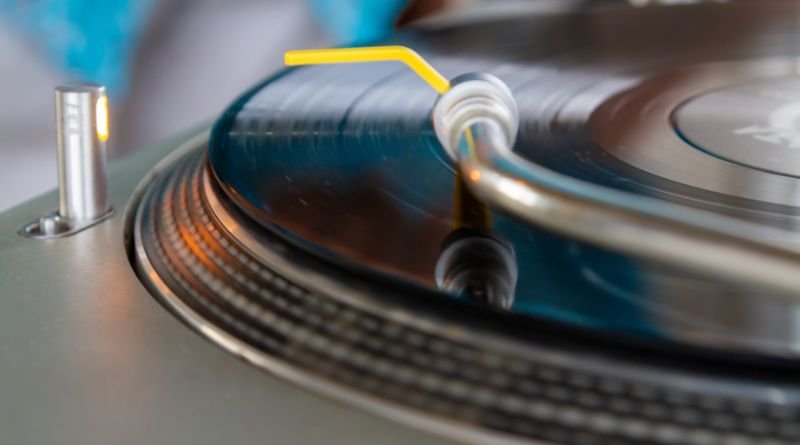Music production has undergone a dramatic transformation over the past century. What once involved bulky equipment, intricate manual processes, and physical tape has now evolved into a digital landscape where a computer can serve as an entire studio. This evolution from analog to digital production has not only changed the way music is made but also expanded creative possibilities, allowing artists to push the boundaries of sound.
Table of Contents
The Analog Era: The Birth of Modern Music Production
The roots of modern music production can be traced back to the analog era, which began in the early 20th century. During this time, music was recorded using large reel-to-reel tape machines, and the process was entirely mechanical and manual. Engineers and producers had to meticulously splice tape to edit recordings, and mixing involved balancing levels on a physical console with a myriad of knobs and sliders.
Warmth and Character:
Analog equipment is often celebrated for the warmth and character it adds to recordings. Tube amplifiers, tape machines, and analog synthesizers imparted unique harmonics and saturation that are difficult to replicate in the digital realm. This sound quality became a hallmark of recordings from the 1950s through the 1970s, influencing the way we perceive music from that era.
Limitations and Challenges:
Despite its charm, analog production had its limitations. Editing was time-consuming and required a high level of skill, and there was little room for error. The equipment was expensive, and studio time was a precious commodity. Additionally, analog recordings were prone to degradation over time, as tape could wear out or deteriorate, affecting sound quality.
The Digital Revolution: A New Era of Possibilities
The 1980s marked the beginning of the digital revolution in music production. The advent of digital audio workstations (DAWs), MIDI (Musical Instrument Digital Interface), and digital synthesizers transformed the industry. These innovations allowed for greater precision, flexibility, and creativity in music production.
Digital Audio Workstations (DAWs):
DAWs, such as Pro Tools, Logic Pro, and Ableton Live, have become the cornerstone of modern music production. These software programs enable producers to record, edit, mix, and master music entirely within a computer. Unlike analog tape, digital audio can be manipulated with precision, allowing for non-destructive editing and unlimited creative possibilities.
MIDI and Virtual Instruments:
MIDI technology revolutionized music production by enabling digital communication between instruments and computers. This allowed producers to control multiple instruments, synthesizers, and effects with a single interface. Virtual instruments, which are software-based recreations of real instruments, have further expanded the sonic palette available to producers. From orchestral strings to vintage synthesizers, virtually any sound can be created and manipulated digitally.
Accessibility and Affordability:
One of the most significant impacts of the digital revolution is the democratization of music production. What once required expensive studio time and equipment can now be done on a laptop with affordable or even free software. This has empowered a new generation of independent artists and producers, allowing them to create and distribute music without the need for major record labels.
Challenges of the Digital Age:
While digital production offers unparalleled flexibility, it also comes with challenges. The ease of editing can lead to overproduction, where music becomes too polished or sterile. Additionally, the digital realm lacks the inherent warmth of analog equipment, leading some producers to seek out hybrid approaches that combine the best of both worlds.
The Hybrid Approach: Bridging Analog and Digital
As technology has advanced, many producers have adopted a hybrid approach to music production, combining analog warmth with digital precision. Analog gear is often used during recording and mixing to capture the character of vintage equipment, while digital tools are employed for editing, processing, and mastering. This approach allows producers to achieve the best of both worlds, creating music that is both sonically rich and meticulously crafted.
The Future of Music Production
Looking ahead, the future of music production is likely to see further integration of advanced technologies like artificial intelligence (AI) and machine learning. These technologies are already being used to assist in tasks such as mastering, sound design, and even composition. As these tools become more sophisticated, they will continue to reshape the landscape of music production, offering new ways to create and experience music.
FAQs
1. What is the difference between analog and digital music production?
Analog music production uses physical equipment like tape machines and analog synthesizers, while digital production relies on software-based tools within a computer. Analog is known for its warm, characterful sound, while digital offers precision and flexibility.
2. Can digital music production replicate the sound of analog equipment?
While digital tools have come a long way in emulating analog sounds, many producers believe that true analog warmth and character are difficult to replicate fully. Some use a combination of analog and digital equipment to achieve the desired sound.
3. What are the advantages of digital music production?
Digital music production offers numerous advantages, including precise editing, affordability, accessibility, and the ability to experiment with an unlimited range of sounds and effects.
4. How has music production changed with the rise of digital technology?
Digital technology has made music production more accessible and flexible, allowing anyone with a computer to produce music. It has also expanded creative possibilities and changed the way music is recorded, edited, and distributed.
5. What does the future hold for music production?
The future of music production will likely see increased use of AI, machine learning, and other advanced technologies, further blurring the lines between analog and digital, and opening up new creative possibilities.
The evolution of music production from analog to digital has been a journey of innovation, creativity, and transformation. As technology continues to advance, the landscape of music production will keep evolving, offering new ways for artists to express themselves and connect with audiences around the world.



